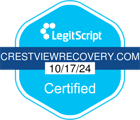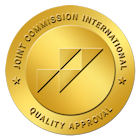Opioids have taken center stage recently and two popular opioids are hydrocodone and oxycodone. When it comes to hydrocodone vs oxycodone, both are prescription painkillers, treat short-term pain caused by surgery and injury, treat chronic pain from arthritis or cancer, and are only available with a prescription from a doctor. Oxycodone and Hydrocodone are highly addictive substances.
With oxycodone addiction treatment in Portland, it’s possible to get the help you need. Call us today at 866.262.0531 for more information.
What Is Hydrocodone?
Hydrocodone is an opioid drug. This pain medication binds to the opioid receptors and changes the way the brain perceives pain. The drug also slows the central nervous system, which includes a person’s blood pressure, heart rate, and respiration. Hydrocodone does have benefits for the therapeutic sense, as do other opioids, but with it comes the risk of dependency and addiction.
Common side effects of hydrocodone include drowsiness, lightheadedness, constipation, nausea, and vomiting. Hydrocodone can be habit-forming and may lead to dependence or addiction. If you take hydrocodone for a long period of time, your body may become tolerant to it, and you may need higher doses of the drug to get the same level of pain relief.
What Is Oxycodone?
Oxycodone comes in five forms and has immediate release and extended-release options. You have to take all forms of oxycodone orally. The drug is similar to a group of natural substances that are already in the brain, called endorphins. These substances decrease the pain signals the body sends to the brain. By imitating these substances, the drug can decrease the amount of pain the brain thinks you are experiencing.
Oxycodone abuse and addiction is a serious problem in the United States. According to the National Institute on Drug Abuse (NIDA), oxycodone is one of the most commonly abused prescription drugs in the country. In fact, NIDA estimates that more than 2 million Americans abuse or are addicted to oxycodone.
The Similarities of the Two Drugs
Individuals can take oxycodone and hydrocodone by themselves but you can find combinations of each of them. For example, acetaminophen added to oxycodone makes a narcotic analgesic, which calms a person’s mood and gives the painkillers some time to work. Hydrocodone combined with an antihistamine creates a cough syrup. Both are powerful narcotics and interfere with the pain signals from the central nervous system. Both medications work by preventing the nerves in the body from sending any pain signals to the brain. You get help however with a drug addiction rehab center.
Who Uses These Drugs?
There are three primary groups of people who use oxycodone and hydrocodone: those with chronic pain, those with anxiety disorders, and those with sleep disorders. Each group has different reasons for using the drugs and different expectations for how they will work:
- Chronic pain sufferers use opioids to relieve their pain. They may have conditions like cancer, arthritis, or nerve damage. Chronic pain can be very debilitating, and people who suffer from it are often unable to work or take care of their daily responsibilities. Opioids can help them manage their pain and improve their quality of life.
- People with anxiety disorders use opioids to relieve their anxiety. Anxiety disorders are different from chronic pain, but they can be just as debilitating. People with anxiety disorders may have panic attacks, feel constantly on edge, or avoid social situations. Opioids can help them relax and feel more like themselves.
- People with sleep disorders use opioids to help them sleep. Sleep disorders can be caused by a number of things, including anxiety, pain, and medications. Opioids can help people with sleep disorders fall asleep and stay asleep.
Side Effects of the Drugs
The common side effects of hydrocodone vs oxycodone are similar. Side effects can include:
- Drowsiness
- Dizziness
- Nausea
- Light or Shallow Breathing
- Dry Mouth
- Lethargy
- Itching
- Motor Skill Impairment
There are also serious side effects that aren’t as common. These include:
- Seizures
- Quick/Rapid Heartbeat
- Painful Urination
- Feeling Like You Could Pass Out
- Confusion
Oxycodone can interact with other medications you are taking. Drugs that you shouldn’t use with oxycodone include buprenorphine and anesthesia.
The Hydrocodone vs Oxycodone High
 There is the potential of getting high using both drugs. Due to its potency, oxycodone can more easily lead to addiction than hydrocodone. However, hydrocodone is the most commonly misused opioid in the country because doctors have prescribed it often and it used to be easy to get.
There is the potential of getting high using both drugs. Due to its potency, oxycodone can more easily lead to addiction than hydrocodone. However, hydrocodone is the most commonly misused opioid in the country because doctors have prescribed it often and it used to be easy to get.
Which Drug Is Stronger?
When comparing hydrocodone vs oxycodone, there is one that is stronger. Doctors can prescribe the drugs in an extended-release version that can treat chronic and around-the-clock pain. However, oxycodone is about 30% stronger than hydrocodone. Studies also show that a combination of oxycodone and acetaminophen can be better at treating pain than hydrocodone with acetaminophen. Addiction to either of these drugs can be treated with the help of addiction treatment programs in Oregon.
Where to Go for Help
The addiction risk for both drugs is high since the DEA classifies both as Schedule II controlled substances. People should take these drugs exactly as instructed, in order to reduce the addiction risk. Addiction can still happen when prescribed either of these drugs. If you or a loved one need help to recover from a hydrocodone or oxycodone addiction, we are here to help. To get started on the road to recovery, contact us today at 866.262.0531.
































